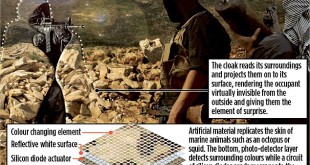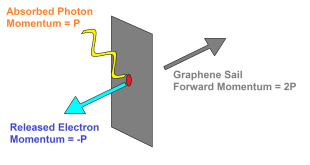In communication applications like the internet, the most simple form of optical communication is with a single fiber consisting of a single wavelength laser TX/RX scheme. In fiber-optic communications, wavelength-division multiplexing (WDM) is a technology that multiplexes a number of optical carrier signals onto a single optical fiber by using different wavelengths (i.e., colors) of laser light. This technique enables bidirectional communications over a single strand of fiber, also called wavelength-division duplexing, as well as multiplication of capacity.
A WDM system uses a multiplexer at the transmitter to join the several signals together and a demultiplexer at the receiver to split them apart. Engineers will put an array of lasers, each composed of different wavelengths, as the bandwidth requirements increase, into a single fiber.
WDM systems are popular with telecommunications companies because they allow them to expand the capacity of the network without laying more fiber. By using WDM and optical amplifiers, they can accommodate several generations of technology development in their optical infrastructure without having to overhaul the backbone network. The capacity of a given link can be expanded simply by upgrading the multiplexers and demultiplexers at each end. Today, long-haul communication systems can have almost 100 wavelengths utilized in a single fiber.
Wavelength-division multiplexing normally requires a separate light source for each wavelength. The general goal is to generate a comb of regularly spaced optical wavelengths or frequencies on standard optical channels. Most multiwavelength sources fall into three basic categories. One simple concept is to integrate diode lasers oscillating at different wavelengths on a single chip—but that merely integrates multiple lasers on a single substrate. A second approach is to generate a continuous spectrum covering a broad range of wavelengths, then slice that broadband emission into a number of discrete optical channels that can then be modulated with signals. A third alternative is to create a type of optical cavity that allows a laser source to oscillate simultaneously on multiple wavelengths.
Nowadays, multiwavelength lasers are of great interest for telecommunications and sensors multiplexing. These lasers also have a great potential in the fiber-optic test and measurement of WDM components. The requirements for such optical sources are: a high number of channels over large wavelength span, moderate output powers (of the order of 100µW per channel) with good optical signal to noise ratio (OSNR) and spectral flatness, single longitudinal mode operation of each laser line, tunability and accurate positioning on the ITU frequency grid. Reaching all these requirements simultaneously is a difficult task, and many different approaches using semiconductor or erbium-doped fiber technology have been proposed and experimented in order to obtain multiwavelength laser oscillation.
Multi-Wavelength Fiber lasers
In a conventional laser, a concentrated light beam is produced by “pumping” the light emitted from atoms repeatedly between two mirrors. In a laser diode, an equivalent process happens when the photons bounce back and forth in the microscopic junction (roughly one micrometer wide) between the slices of p-type and n-type semiconductor, which is technically known as a Fabry-Perot resonant cavity (a kind of interferometer). The amplified laser light eventually emerges from the polished end of the gap in a beam parallel to the junction.
A fiber amplifier can be converted into a laser by placing it inside a cavity designed to provide optical feedback. Such lasers are called fiber lasers. In this kind of lasers there are optical fibers that act as gain media such as erbium or ytterbium doped fibers among other, although some lasers with a semiconductor gain medium and a fiber resonator have also been called fiber lasers.
Fiber lasers also offer great possibilities as multiwavelength sources. Their ease of fabrication has yielded many ingenious designs. The main challenge in producing a multiline output with and erbium doped fiber laser (EDFL) is the fact that the erbium ion saturates mostly homogeneously at room temperature, preventing stable multiwavelength operation.
Single longitudinal mode operation of fiber lasers is desirable for many potential applications where coherence is necessary. These include coherent communications, interferometric fiber sensors and coherent light techniques in bulk or micro-optics, such as holography or spatial filtering. However, these lasers normally operate in multiple longitudinal modes because of a large gain bandwidth (>30 nm) and a relatively small longitudinal-mode spacing (< 100 MHz). The spectral bandwidth of laser output can exceed 10 nm under CW operation. Many applications of continuous wave (CW) lasers require operation in a narrow-linewidth single mode whose wavelength can be tuned over the gain bandwidth. Numerous methods have been used to realize narrow-linewidth fiber lasers, however fiber Bragg gratings (FBGs) are preferred for this purpose since they can be fabricated with a reflectivity spectrum of less than 0.1 nm.
It is also worth noting that the large gain bandwidth of fiber lasers is useful for tuning them over a wavelength range exceeding 50 nm. Several other methods have been used to achieve single longitudinal mode operation of fiber lasers and these include unidirectional ring resonators, intracavity wave-mixing in a saturable absorber, fiber Fox-Smith resonators and injection locking using the line narrowed output form a separate source. Nevertheless, no technique is free from operating difficulties due to the problems of isolating the fiber laser resonator from environmental influences, such as vibrations and temperature drift among other factors.
Intel Lab researchers demonstrate a tightly controlled, highly integrated eight-wavelength laser.
Intel Labs has announced “a significant advancement in its integrated photonics research – the next frontier in increasing communication bandwidth between compute silicon in data centers and across networks.”
In June 2022, Intel made significant advances in the field with the announcement of a successful demonstration of a tightly controlled, integrated eight-wavelength laser. Recent co-packaged optics solutions using dense wavelength division multiplexing (DWDM) technology have shown the promise of increasing bandwidth while significantly reducing the physical size of photonic chips. However, it has been very difficult to produce DWDM light sources with uniform wavelength spacing and power until now.
“We accomplished this laser area with eight lasers with very uniform wavelength spacing, which is really hard to achieve. We have unique design and fabrication technology that allows us to do what nobody else can. We bound a very small piece of phosphate chip on the wafer and we planarized and removed the substrate fab. The result was a wafer with a very thin film of the phosphate on it.”
The result is a laser array that promises to deliver an impressive output power uniformity of +/- 0.25 dB and wavelength spacing uniformity of ±6.5%, exceeding industry specifications. Moving forward, Intel believes its advancement will be instrumental in facilitating network-intensive workloads, including artificial intelligence and machine learning.
To many, the path towards future I/O interfaces with improved energy efficiency and longer reach may very well be integrating silicon circuitry and optics side by side on the same package. By combining CMOS and photonics into a single package, researchers believe that they could directly address the limitations of conventional copper interconnects to increase overall bandwidth, energy efficiency, and circuit complexity.
The field of integrated photonics has increased in importance significantly in the past decade. Where trends like rising data rates and traffic are increasingly limiting the performance of conventional copper interconnects, photonics and integrated photonics have become crucial to networking infrastructure. To achieve the integrated photonics necessary for chip-to-chip communications, Intel Labs has explored co-packaged optics solutions using dense wavelength division multiplexing (DWDM) technology. This strategy has shown the promise of increasing bandwidth while significantly reducing the physical size of photonic chips. However, a major challenge thus far has been how to produce DWDM light sources with uniform wavelength spacing and power.
intel believes that this achievement will enable the production of the optical source with the required performance for future high-volume applications, such as co-packaged optics and optical compute interconnect for emerging network-intensive workloads including artificial intelligence and machine learning. The new laser array is built on Intel’s 300mm silicon photonics manufacturing process paving the way for high-volume manufacturing and broad deployment.
The optical solution is a distributed feedback (DFB) laser array that is fully integrated on a silicon wafer and was designed and fabricated on Intel’s 300 mm hybrid silicon photonics platform. Within this, Intel used advanced lithography to define the waveguide gratings in silicon prior to the III-V wafer bonding process, allowing for better wavelength uniformity compared to conventional semiconductor lasers. As Rong explains:
 International Defense Security & Technology Your trusted Source for News, Research and Analysis
International Defense Security & Technology Your trusted Source for News, Research and Analysis

